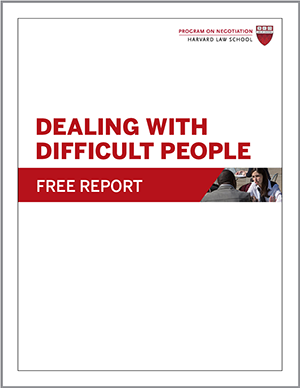
Sometimes disputes are left to fester for years, even decades, until parties decide there is something to be gained from reaching agreement. In 2015, the nations of Bangladesh and India seized on an opportunity to push the “restart” button on a contentious border disagreement through dispute resolution. Such international conflict resolution examples can illustrate how to move beyond impasse in contentious disputes.
Living in No Man’s Land
For many decades, on each side of the twisting 4,000-kilometer border between India and Bangladesh, small plots of land belonging to each nation were surrounded by the other nation’s territory. The origins of these so-called enclaves—111 Bangladeshi, 51 Indian—were obscure. Some said they represented drops of ink spilled by a drunken British officer as he drew the India-Pakistan border during the 1947 partition. Others said they were the outcome of a high-stakes card game between two regional kings many centuries ago. More likely, the dots of land, which added up to just 15 square miles, were bargaining chips in a 1711 peace treaty in the region, according to the Economist.
Isolated from their home countries, the enclaves were neglected in the decades after India gained independence from British colonial rule in 1947. With neither India nor Bangladesh allowing the other to administer its enclaves, residents were trapped without hospitals, schools, courts, or travel privileges in the nation that surrounded them.
In the 1970s, the Indian and newly formed Bangladeshi governments decided to tackle the problem. The two nations agreed to swap their territories, such that each would acquire the enclaves within its borders. India said it would forgo compensation for an approximate net loss of about 10,000 acres. Those living in the enclaves could decide whether to move to their homeland to remain its citizens or stay put and become nationals of their new country, according to Reuters. However, the agreement proved unpopular and remained unratified for decades.
Dusting Off an Old Deal
That changed in 2015, when the prime ministers of both countries apparently recognized that resolving the matter would benefit not only the enclaves’ residents but also them personally. Indian prime minister Narendra Modi sought to deflect attention from domestic setbacks with the land-swap agreement, which he hyperbolically compared to the fall of the Berlin Wall. And Bangladeshi prime minister Sheikh Hasina, widely criticized for authorizing violent crackdowns against her political opposition, saw an opportunity to demonstrate her legitimacy on the world stage through an agreement with the world’s largest democracy, according to the Guardian.
During a brief June 2015 visit to Bangladesh’s capital, Dhaka, Modi oversaw the signing of about 20 agreements with India’s neighbor, including the land-swap deal. Simultaneously, Indian conglomerates signed draft contracts to invest about $5 billion in improving Bangladesh’s aging power sector.
Those who had been stranded in the enclaves, many for their entire lives, expressed relief that their fate had been finally settled. Most decided to stay put and accept a change in citizenship. They eagerly awaited the arrival of infrastructure and administration. “We didn’t have hospitals, schools, electricity—nothing,” Madhusudan Mohanto, a resident of an enclave in Bangladesh, told the Wall Street Journal. “Now we hope we’ll get our rights back.”
Indian officials said the enclave agreement signaled their nation was equipped to tackle more difficult border disputes with China and Pakistan. In the years since, military standoffs and skirmishes have continued on the borders of territories between India and China; negotiations and commitments have been carried out sporadically. The border between India and Pakistan remains disputed.
The 2015 deal did allow India, long perceived by Bangladeshi leaders and citizens as overbearing on territorial and migration issues, to build trust and goodwill as it prepared to confront more difficult disputes with Bangladesh. Seven years later, in 2022, India and Bangladesh signed an agreement to share the water of the Kushiyara River on their border, notes India-based DownToEarth magazine. However, a difficult dispute surrounding rights to the waters of the Teesta River, which flows through both countries, remained unresolved as of 2022.
Dispute Resolution When, at First, You Don’t Succeed
Business negotiators can absorb valuable lessons from conflict resolution examples in history. Here are some that emerged from the India-Bangladesh dispute resolution process and agreement:
- Never say never.According to “ripeness theory,” negotiators won’t come to agreement until the time is ripe. For this reason, it can pay to periodically revisit mothballed negotiations to examine whether changed circumstances have improved the odds that a dispute resolution effort will succeed.
- Build goodwill.If large problems loom on the horizon, consider starting with a relatively straightforward negotiation. Small wins between parties can build the confidence and trust they need to tackle larger problems together—although negotiators are sometimes overoptimistic about the degree to which more minor agreements resolve their differences.
- Engage leaders.To gain needed advocates, demonstrate to powerful leaders what they stand to gain from a dispute resolution effort. Buy-in from top leaders is typically needed to motivate parties to negotiate in good faith.
What lessons have you learned from real-life examples of conflict resolution?





